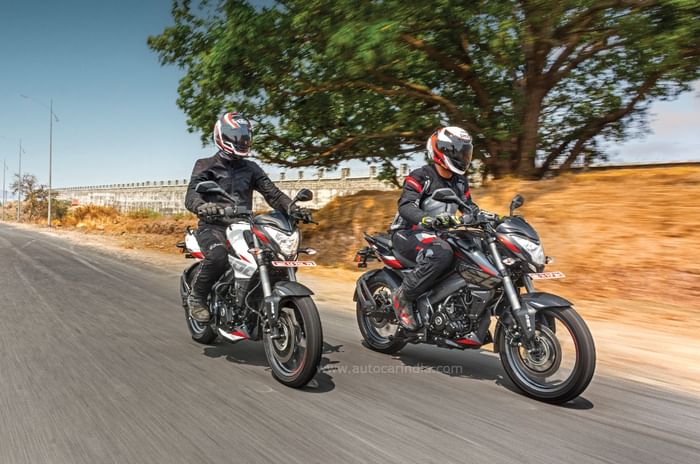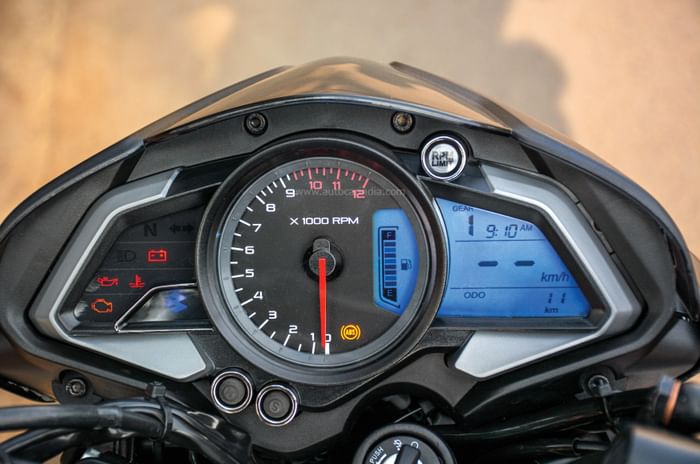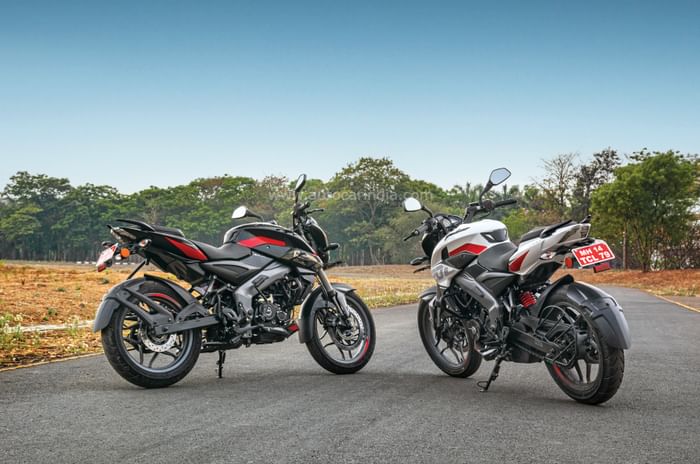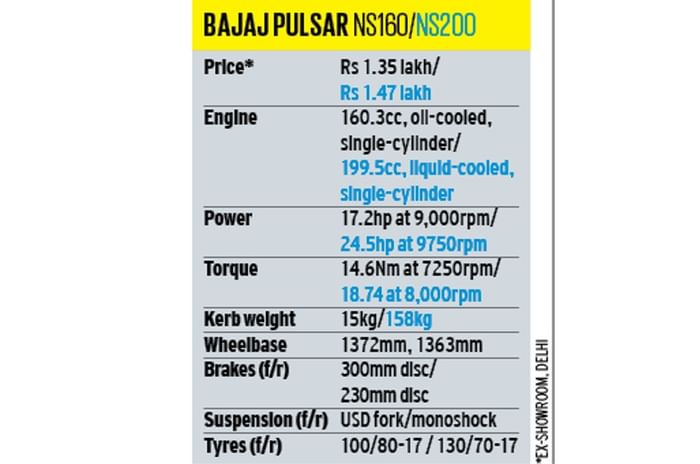Bajaj Pulsar NS 200, NS 160 review: Keeping it fresh
Years later, the NS 200 still manages to make a case for itself with its appealing engine.
Published on Mar 25, 2023 10:00:00 AM
29,298 Views
Follow us on

Revised display shows gear position, distance to empty and more.

USD fork improves stability and feedback

We Like
- Improved handling, stronger braking
- NS200's engine is entertaining
We Don't Like
- NS160 feels outdated
- Bikes priced too close to N160/250
There are now 11 different Pulsars on sale – yes, 11! That's because Bajaj find themselves in a tricky situation: loyalists don’t want to let go of old motorcycles and many of the new age models (particularly, the 250s) have had a slower acceptance rate than the company would have liked. The result is a strange mix of machines, some with the latest of Bajaj’s design and technology as well as a number of others that cut shapes that we have grown familiar with over the last decade or more. The two bikes you see here are very much from that latter group.
Bajaj tells us that they still sell about 3,500 NS Pulsars in India every month, and that number is doubled when it comes to overseas sales, primarily from Latin American markets. Clearly, discontinuing these motorcycles is out of the question so the company did the next best thing – give them a bit of an update.
Bajaj Pulsar NS 200, NS 160 design updates
Both the Pulsar NS 200 and NS 160 now get an upside down front fork, bigger brakes and a few other updates. Style wise, these are still two thoroughly good looking motorcycles and the Edgar Heinrich design still looks muscular and proportionate ten years later. If anything, the addition of the USD fork completes the design.
This 33mm (inner tube diameter) fork is specially made for the India-spec Pulsars and it’s a different, slimmer unit than what you’ll find on the Dominar 250. That helps save weight, as do the new wheels, which have come from the Pulsar 250s. This has resulted in the NS 200 being slightly lighter now, although the NS 160’s weight has gone up by 1kg because it now shares the larger tyre sizes with the NS 200.
The other update is that both bikes now get the Grimeca brakes from the Pulsar 250s and they bring larger 300mm front discs on both bikes. Dual channel ABS is also standard and the braking performance on both bikes has improved, with it being quite good in terms of initial bite and overall power.
The final update worthy of note – apart from the new stickers on top of old colours – is that the bikes get a tweaked semi-digital instrument cluster. This is like the old display, except that it now displays the gear position and has a distance to empty readout.
Bajaj Pulsar NS 200, NS 160: ride and handling
In theory, a USD fork brings in more rigidity and stiffness to the front end, which helps create more feel and feedback for the rider. Whether this new fork is significantly better than the old one, I cannot tell you because we didn’t get to ride the old and new bikes back to back, and it’s been ten years since we last rode the NS 200 on the Bajaj test track. However, the few laps we did get around here showed that the front end was stable, planted and always felt predictable. What is still like the NS of old is that the rear felt soft in comparison to the front, which caused it to feel bouncy on some sections of Bajaj's Chakan test track. Raising preload helps control this behaviour and there’s a good amount of handling ability to exploit before the foot pegs begin to scrape the tarmac.
After a fun few laps on the NS 200, we rode both bikes on the road. It didn’t take much time to find plenty of bumps and potholes, but at no time did we find the ride to be harsh. Most sharp edges were rounded off nicely and while the softer monoshock wasn’t exactly plush, it also didn’t feel harsh or painful on the back.
Bajaj Pulsar NS 200, NS 160 engines, performance
As for the engines, there are no changes except that the bikes are now equipped with OBD2 hardware to comply with the BS6 Phase II emission norms.
Performance-wise the NS 200’s liquid-cooled engine has a peaky nature, which makes it quite an entertainer. It only really comes alive post 6,000-7,000rpm and it’s quite a lot of fun to rev out till 10,000rpm. The NS160, on the other hand, offers better tractability and the power delivery is quite linear. However, this engine feels its age, and it is nowhere near as refined as the silky smooth Pulsar N160.
Bajaj Pulsar NS 200, NS 160: verdict
To conclude, the NS 160's new and more expensive hardware makes it a slightly better motorcycle to ride, but it still feels like an old bike. Especially when you consider that the new Pulsar N160 is a much better motorcycle in most aspects. When you then consider that the NS 160 costs about Rs 4,000 more than the N160 dual-channel ABS version, it tilts the choice in favour of the N160.
The NS 200, however, continues to make a case for itself, even today. That is because there is no other bike in the segment with this revvy, brash character, apart from the KTMs. While these updates bring appreciable improvements, it's still the engine that holds the appeal.

Also see:
2023 Bajaj Pulsar NS160, NS200 video review
Copyright (c) Autocar India. All rights reserved.





Comments
Member Login
Personal Details
No comments yet. Be the first to comment.